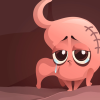
We all know about a variety of diseases, but have you heard of chronic obstructive pulmonary disease? Well, it is one of the most dangerous diseases related to the lungs. So, do you want to know about it in detail? If yes, keep reading!
Understanding Chronic Obstructive Pulmonary Disease (COPD)
Before moving any further, let’s first focus on ‘what is COPD’. What does COPD stand for? Well, it is a progressive lung disease that makes it hard to breathe. COPD occurs when the passages to the lungs get obstructed, lose their elasticity, or become thick and inflamed.
Obstructive Pulmonary Disease – What Are Its Causes?
Cigarette smoking is the leading cause of chronic obstructive pulmonary disease. It has been seen that most people with COPD either smoke or used to smoke in the past. Other causes of chronic obstructive pulmonary disease include long-term exposure to pollutants, chemical fumes, and dust.
Chronic Obstructive Pulmonary Disease: A Look at Its Types
You need to keep in mind that obstructive lung disease is of two types. Emphysema occurs when the walls of the air sacs in the lungs are damaged. The sacs become floppy, and the exchange of gases in the lungs gets reduced.
On the other hand, people who have chronic bronchitis find that their airways are constantly irritated and inflamed. This causes the lining of the airway to thicken, and leads to the production of excess mucus, making it difficult to breathe.
Remember that most people who have chronic obstructive pulmonary disease have both Emphysema and Chronic Bronchitis, so the term “COPD” is used universally.
What Are the Symptoms of Chronic obstructive pulmonary disease?
The symptoms of chronic obstructive lung disease come on gradually and eventually become so severe that they limit daily activities. Some of the most common symptoms include:
- Shortness of breath
- Wet cough, with excess mucus
- Frequent lung infections that are difficult to treat
- Wheezing
- Fatigue
- Unintended weight loss
Pathophysiology Of Chronic Obstructive Pulmonary Disease – Treatments
After getting familiar with all the COPD information, let’s now understand its treatments. Although there is no cure for COPD and doctors have not yet figured out how to reverse the damage, the symptoms can be managed. Yes, you heard it right. Lifestyle changes coupled with treatment allow most people to live productive lives despite the disease. Treatment options include:
Bronchodilators (Short-acting Beta 2 agonists):
These are fast-acting inhalers that open the air passages and make breathing easier. They are designed for “instant relief”, but the effects are short-lived. Side effects include a headache, muscle cramps, shakiness, rapid heartbeat, insomnia, and irritability.
Bronchodilators (Long-acting Beta 2 agonists):
These inhalers work the same way as short-acting agonists, but the effects are more long reaching. Rather than being an “emergency” medicine, these are maintenance medications designed to control the symptoms of COPD. The side effects are the same as the short-acting inhalers.
Bronchodilators (Anticholinergics):
These are also inhalers but are designed for long-term usage at all stages of COPD.
Other than the above-mentioned ones, some oral medications and oxygen therapy are also used to treat chronic obstructive pulmonary disease.
Final Words
We hope that after all this information if someone asks you to define COPD or talk about it, you will be able to do so. Remember that chronic obstructive pulmonary disease cannot be cured or reversed, but it can be prevented. If you are a smoker, stopping now will help in decreasing your chances of getting COPD, and if you already have it, stopping smoking will help to lessen your symptoms and increase the chances of successful treatment.
Also Read
SLEEP APNEA: THE SURPRISING CULPRIT BEHIND YOUR RESTLESS NIGHTS
RECOGNIZING THE SILENT SYMPTOMS OF GERD BEYOND HEARTBURN
MASTERING EVERYTHING ABOUT DEGENERATIVE JOINT DISEASE
EXPLORING THE INTRICATE LINK BETWEEN CORTISOL AND SLEEP PATTERNS
TIPS TO MAINTAIN AN ACTIVE LIFESTYLE WITH EARLY ONSET ALZHEIMER’S




